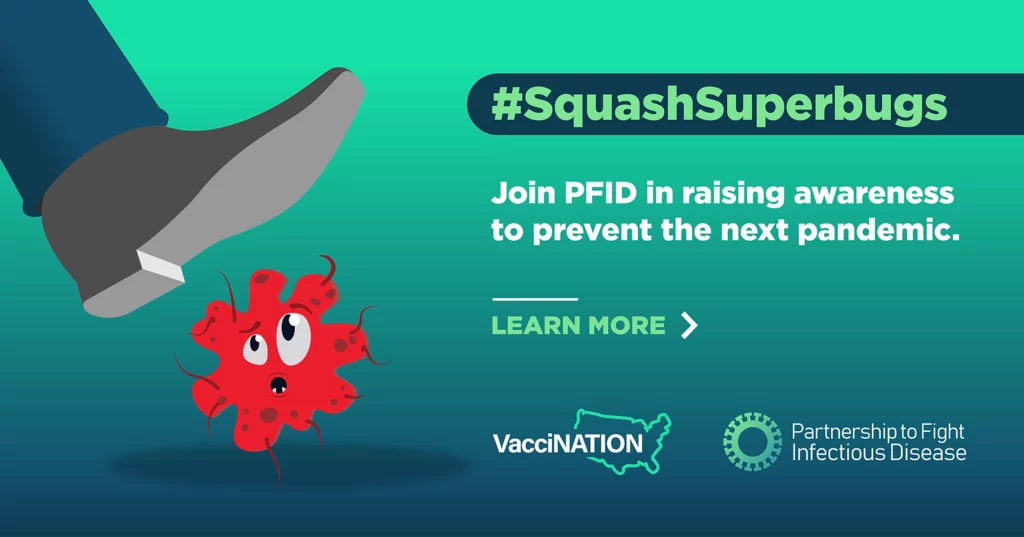Monday Roundup

From Washington, DC,
- Federal News Network tells us,
- “Close to 15,000 blue-collar federal employees working in trade, craft and manual labor jobs are likely to see their federal pay rates increase by as much as 12%, once a new proposed rule from the Office of Personnel Management becomes finalized.
- “The proposed regulations, which OPM released on Monday, aim to improve overall pay parity for roughly 168,000 blue-collar federal workers who are paid hourly through the Federal Wage System (FWS). In practice, OPM’s proposal would align the map of FWS wage areas more closely with the General Schedule’s locality pay map.
- “This would lead to greater equity across federal pay systems, with FWS workers’ pay more aligned with GS workers who work in the same geographic area,” OPM wrote in a press release Monday.
- ‘As a result of the proposed re-mapping, around 15,000 blue-collar federal employees would begin receiving higher pay rates once OPM’s regulations become final — as long as there are no major changes to how the proposed regulations are currently written.”
- and
- “The Postal Service, more than three years into a 10-year reform plan, is seeking a higher borrowing limit with the Treasury Department to sustain its infrastructure upgrades.
- ‘USPS, in an update to its “Delivering for America” plan last week, said its current $15 billion debt limit with Treasury was set in the 1970s, and has not been adjusted for inflation in decades.
- “We continue to lack access to capital and credit markets that most in the private sector rely on in transformative situations like ours,” USPS wrote in a report last week.
- “USPS is also calling on the Office of Personnel Management to reassess what it pays into the Civil Service Retirement System, the pension system for federal employees who began government service before 1987.”
- Gallagher timely reminds us about ACA FAQ 63 which told us
- “In late November 2023, the ACA regulators released updated guidance on Culturally and Linguistically Appropriate Services County Data (CLAS County Data). This 2023 CLAS Guidance is available at https://www.dol.gov/sites/dolgov/files/ebsa/laws-and-regulations/laws/affordable-care-act/for-employers-and-advisers/clas-county-data-2023.pdf and https://www.cms.gov/marketplace/resources/fact-sheets-faqs
- “Non-grandfathered group health plans and health insurance issuers offering non-grandfathered health insurance coverage are required to provide SBCs as well as claims and appeals notices in a manner that is consistent with the 2023 CLAS Guidance effective for plan years (in the individual market, policy years) beginning on or after January 1, 2025.”
.
- The American Hospital Association News informs us,
- “AHA President and CEO Rick Pollack Oct. 7 sent a letter to President Biden urging the Administration to take immediate actions to increase the supply of IV solutions for hospitals and other health care providers that are struggling with shortages following the closure of a Baxter manufacturing plant as a result of Hurricane Helene.
- “Our members are already reporting substantial shortages of these lifesaving and life-supporting products,” Pollack wrote. “Patients across America are already feeling this impact, which will only deepen in the coming days and weeks unless much more is done to alleviate the situation and minimize the impact on patient care.”
- “The letter includes a number of specific actions the AHA is asking the Administration to take to support hospitals’ ability to care for patients and communities. In addition, the AHA invited the White House and agency experts to join the association in a forum to communicate directly with hospitals and health systems to “inform each other in real time on the status of the situation while we work together to mitigate the impact on patients.”
- Fierce Healthcare offers a summary of HHS’s proposed 2026 notice of benefit and payment parameters for the ACA marketplace. The public comment deadline is November 12, 2024.
From the Food and Drug Administration front,
- Per an FDA press release,
- “Today [October 7], the U.S. Food and Drug Administration granted marketing authorization for the Healgen Rapid Check COVID-19/Flu A&B Antigen Test. The test, authorized for use without a prescription, is for use by individuals experiencing respiratory symptoms and uses a nasal swab sample to deliver at-home results in approximately 15 minutes for COVID-19 and influenza (flu). The test detects proteins from both SARS-CoV-2 (the virus that causes COVID-19) and influenza A and B (the viruses that causes flu).
- “This is the first over the counter (OTC) test that can detect influenza to be granted marketing authorization using a traditional premarket review pathway, which enables the test to be marketed in the absence of an applicable emergency use declaration. Other OTC flu/COVID tests are currently available under emergency use authorization.”
- Per MedTech Dive,
- The Food and Drug Administration approved Exact Sciences’ Cologuard Plus colorectal cancer test, the company said Friday [October 4].
- The product is an updated version of Exact Sciences’ existing stool-based cancer test. The company expects to launch the test, which has higher specificity than its predecessor, with Medicare coverage and guideline inclusion in 2025.
- Exact Sciences recently failed to land a Medicare price premium for Cologuard Plus, but Leerink Partners and William Blair analysts expect one of the company’s subsequent attempts to succeed.
From the public health and medical research front,
- The Wall Street Journal reports,
- “The Nobel Prize in medicine was awarded to Victor Ambros and Gary Ruvkun for the discovery of microRNA, molecules that help control how genes are expressed.
- “Their findings unlocked new areas of research into the roles these molecules play in human health. Researchers are exploring microRNA treatments for cancer, heart disease and dementia.”
- “Ruvkun and Ambros were giddy with excitement on Monday after learning of their Nobel honors.”
- Kudos to the recipients.
- and, on a different topic,
- “Inflammaging, a chronic low-grade inflammation, is associated with an increased risk of heart attack, cancer, Alzheimer’s and other conditions. It occurs as we age, but some people develop it more than others.
- “Chronic inflammation can be caused by cellular senescence, where damaged aging cells secrete inflammatory proteins.
- “Prevention and treatment measures include lifestyle changes such as exercise, healthy diet and adequate sleep.”
- The American Medical Association lets us know eight things that doctors wish their patient knew about the flu vaccine.
- Consumer Reports, writing in the Washington Post, fills us in on how to choose the right multivitamin for your body’s needs.
- Per BioPharma Dive,
- “An experimental, muscle-preserving therapy from Scholar Rock succeeded in a Phase 3 trial in spinal muscular atrophy, positioning the biotechnology company to seek approvals in the U.S. and Europe early next year.
- “A regimen of Scholar Rock’s drug, apitegromab, and a standard SMA therapy significantly improved motor function after one year versus treatment with a typical SMA medicine and a placebo, the company said Monday. Specifically, a prespecified, pooled analysis showed children between 2 and 12 years old who received one of two tested doses had an average difference versus placebo of about a 1.8-point change from baseline on a scale used to evaluate their physical abilities.
- “Motor function benefits were also observed in a smaller, exploratory group of 13- to 21-year-olds, according to the company. No new safety findings were reported, and no one dropped out of the trial due to side effects. “We believe these data collectively show that apitegromab has the potential to become part of a new standard of care,” CEO Jay Backstrom said on a conference call. Shares more than quadrupled in value Monday.”
From the U.S. healthcare business front,
- Per Fierce Healthcare,
- “The healthcare industry is making the push toward greater adoption of value-based care, yet it’s not a secret that progress has been slow-moving.
- “With that backdrop, UnitedHealth Group has released its latest “A Path Forward” report, which is a biennial look at progress in the shift to value. The paper includes dozens of policy recommendations that the team believes can accelerate that transformation.
- “Wyatt Decker, M.D., UnitedHealth Group executive vice president and chief physician who’s leading the charge at the company on value-based care and innovation, told Fierce Healthcare in an interview that the U.S. healthcare system is extremely effective at addressing crises, complex patient conditions and end-stage needs. But it’s in prevention where “we really fall down,” he said.
- “We don’t, by and large, have a system that focuses on keeping people healthy and well,” Decker said. “Most people wonder why their physician or their assistants don’t reach out when it’s time to get a screening and why they have so much trouble scheduling appointments, finding doctors, and, of course, figuring out how much it’s all going to cost.”
- and
- “GenAI experimentation, research and potential use cases proliferate by the day. Like other industries, healthcare is hurrying to jump on the opportunity. A growing number of companies are creating genAI products to help organizations streamline their administrative workflows, simplify physician notetaking or respond to basic patient questions. But publicly available tools, like ChatGPT, are popular, easy to access and simple to use. If consumers are using them, are doctors, too?
- “The answer, Fierce Healthcare finds, is yes. In the first in-depth look of its kind into physician use of public genAI tools, Fierce Healthcare spoke with nearly two dozen doctors, students, AI experts and regulators, and helped conduct a survey of more than 100 physicians. The reporting confirms that some doctors are turning to tools intended for non-clinical uses to make clinical decisions. With no standardized guidelines, lagging physician training and regulators racing to try to keep up with rapidly changing technology, guardrails to protect patients appear to be years behind current rates of utilization.
- “You have an uncertain regulatory environment, you’ve got a march of technology and at the same time, you have an uptake by both consumers and healthcare professionals. And the consequences of that are very much uncertain,” Peter Bonis, M.D., chief medical officer at Wolters Kluwer, an information services company, told Fierce Healthcare.”
- The FEHBlog learned a new use for the work “hallucination” today at the Texas Bar Association’s Health Law Conference. A generative AI mistake is a hallucination.
- McKinsey and Company discuss “Advancing inclusive care pathways for people with disabilities. Across disease types, patients with disabilities experience inequities all along the care pathway—with consequently worse outcomes. Inclusive pathway designs and targeted interventions could help.”








